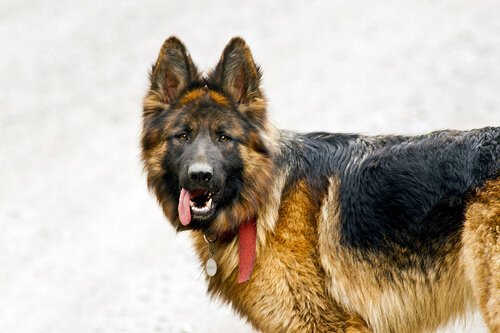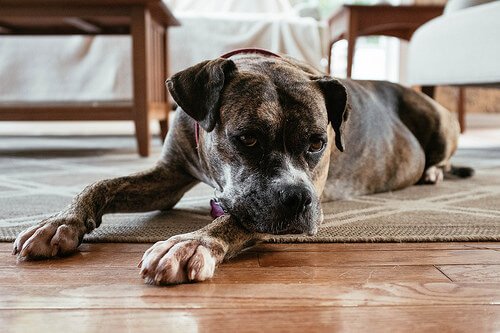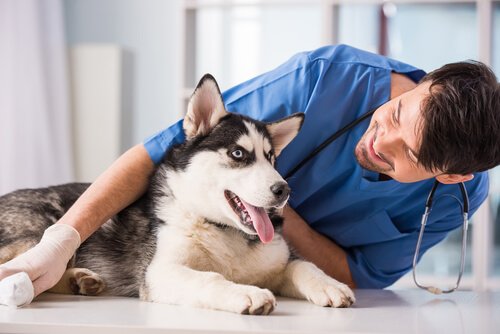What to Do When a Dog is Convulsing

Convulsions are produced by disorders of the nervous system, which manifest themselves as motor disorders and, in some cases, as a loss of consciousness. When a dog is convulsing, it is essential to take the animal for an immediate medical check-up.
A common mistake is believing that having convulsions indicates a disease. Convulsions can occur due to a variety of factors. However, they are actually a symptom of a pathology problem or a condition.
Therefore, a specialist diagnosis will indicate the origin and the appropriate treatment for a dog that is having convulsions. Pet owners must know what to do in the face of a convulsion, and treatment will depend on the animal’s health and state of improvement. To make it a little easier, here are a few tips on what to do if a dog is convulsing.
Why Dogs Have Convulsions
The causes can originate in a few different ways, such as traumatic or congenital events. External agents however, like medications, can also cause convulsions in dogs.

- If an animal suffers a significant head injury, this can result in convulsions too. In this instance, you need to inform your veterinarian of the possible convulsion cause.
It is very likely that the specialist will decide to do a cranial encephalic study to evaluate possible injuries.
- Metabolic disorders. Some metabolic diseases are associated with seizures, and also certain hormonal disorders. These include hepatitis, hypoglycemia and hypocalcemia, to name a few.
The same occurs with associated thyroid issues.
- Infections or poisoning. When a dog has convulsions, it is important to rule out an infection. One of these infections may be meningitis.
Drug and medication intoxication can also cause convulsions.
- Breast tumors in dogs, degenerative diseases or other diseases can only be diagnosed by a specialist. Especially, and with more reason, when a dog has convulsions.
Generally speaking, some chronic degenerative diseases and brain tumors can be associated with convulsions and seizures.
- Convulsions can also be the result of congenital (otherwise known as, inherent) causes. Brain malformations in some dog breeds mean that they are also prone to suffering from seizures and convulsions.
Chihuahuas, Yorkshire Terriers and Poodles are all good examples. Hydrocephalus, which can degenerate into epilepsy, is common in these breeds.
What to Do When a Dog is Convulsing
Before the convulsion
If an animal has a convulsion, it is important to immediately take it to a specialist. The same is true if you suspect any nervous disorders.
For example, a good preventive method is to take the dog for a check-up in the event of any major traumas or injuries. (Even if the animal has not had any convulsions.)
Convulsions occur in three phases:
- People commonly confuse the first phase with an emotional reaction. The dog becomes shakier and more nervous, and experiences excessive salivation. These symptoms can last up to two days, and can appear intermittently.
- The second phase is in association with crisis. When a dog convulses, its muscles will contract and its body will involuntarily shake. In some cases, the animal even loses consciousness.
- Lastly, once the seizure is over, the dog recovers gradually. He or she might also be a little confused and disoriented.
During the seizure
- If your pet is having a seizure, it is very important to remain calm. You must also remove any objects from the dog’s surroundings, that could be harmful to him during the convulsions.
- Do not try to pick up or grab the animal. Instead, be sure to place pillows and cushions around your pet to prevent any possible injuries.
- Sound or light stimuli can further disturb the dog, so it is important to avoid them. You should also avoid bundling up your dog, and refrain from offering it water or food.
- Keeping a close eye on the animal is essential. You have to keep the dog from leaning its head back and sticking out its tongue, because these actions can result in the animal choking.

After the seizure
- Immediately call a trusted veterinarian once the seizure is over. He or she will be able to provide you with further instructions.
- The veterinarian will probably ask you a few questions, such as: How many times did the dog convulse? How long did the seizure last? What happened before the seizure?
- Additionally, the veterinarian needs to know if the dog is under any medical treatment, or if he or she has experienced any head injuries.
- It is important to give the animal space while it is recovering from the seizure. If your dog fainted, you should also try to help him or her regain consciousness. Do not give the dog medication, under any circumstance, without medical supervision or authorization.
- The specialist diagnosis will shed light on causes and treatment options. Convulsions are generally associated with epilepsy, but a dog does not have to be epileptic to have a convulsion.
